Explainer – What is the Australia New Zealand refugee resettlement deal and why has it been agreed after nearly a decade?
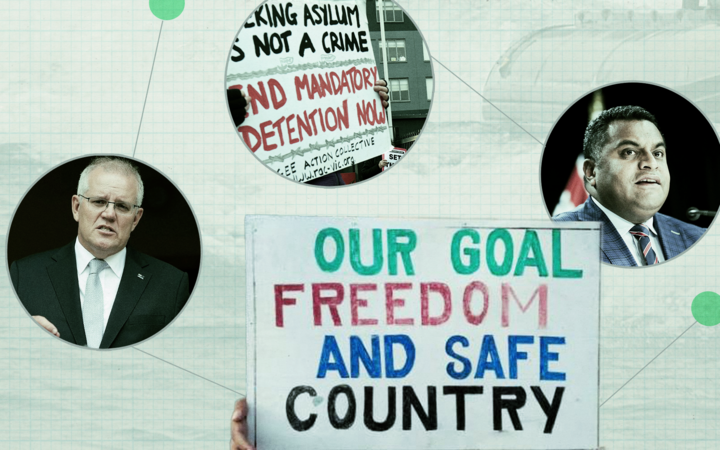 Photo: RNZ / Leilani Momoisea
Photo: RNZ / Leilani Momoisea
Australia and New Zealand have announced a landmark refugee resettlement deal that will see 450 refugees from Australia’s regional processing program relocated to Aotearoa.
Under the agreement, 150 refugees will be allowed to resettle in New Zealand each year for the next three years – these refugees will fall under the government’s annual refugee quota.
But why has the deal taken almost a decade, what does the deal mean for the future of offshore detention facilities, and how will refugees be supported as they transition into New Zealand society?
RNZ is here to clear it all up.
How did the deal come to be?
In 2013, former Prime Minister John Key struck a refugee resettlement deal after meeting with his Australian counterpart Julia Gillard in Queenstown.
However, the announcement was followed by a time of political upheaval in Australia, with Tony Abbott leading a Liberal-National coalition to victory in the 2013 election, bringing an end to six years of Labour governance.
Following this, New Zealand’s refugee resettlement deal was sidelined as successive governments repeatedly claimed the deal would encourage more refugees to travel to Australia and lead to people-smuggling of illegitimate refugees.
In 2016, a deal was struck with the United States that would see the US resettle up to 1250 refugees from Australia’s detention facilities, the first were accepted into the US in 2017.
Despite continued offers from Prime Ministers Bill English and Jacinda Ardern, New Zealand’s offer of a deal remained stagnant.
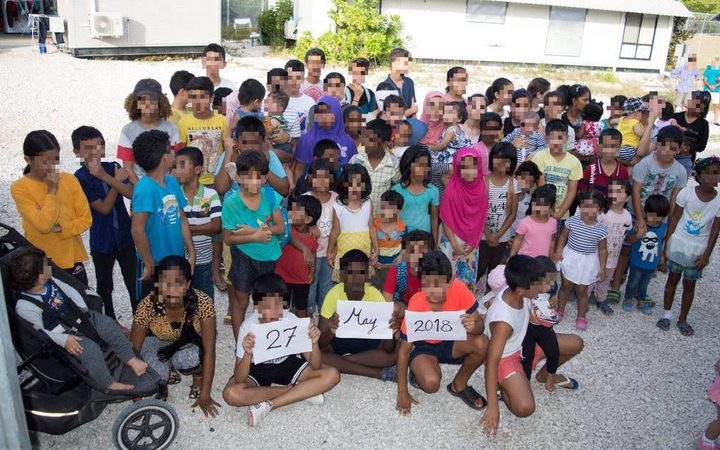 File image: Refugee children on Nauru in 2018 Photo: Kids off Nauru
File image: Refugee children on Nauru in 2018 Photo: Kids off NauruHow did Australia react to an influx of people seeking asylum?
With the Syrian refugee crisis reaching its shores in 2012, the Australian government re-established a hard stance on refugees arriving in boats seeking asylum – a strategy seen in the early-2000s.
In response to increases in boat arrivals, the Gillard Government re-opened offshore processing facilities in Nauru and Papua New Guinea in 2012.
Gillard then reintroduced the policy of transferring asylum seekers to these offshore processing centres.
In 2013, Tony Abbott’s government doubled down by introducing a policy preventing anyone arriving by boat from ever settling in Australia, instead they were imprisoned in controversial offshore detention centres in Nauru and Manus Island.
This further hindered the New Zealand resettlement deal, as there were concerns that refugees could undermine the policy by using New Zealand citizenship as a back door to settle in Australia.
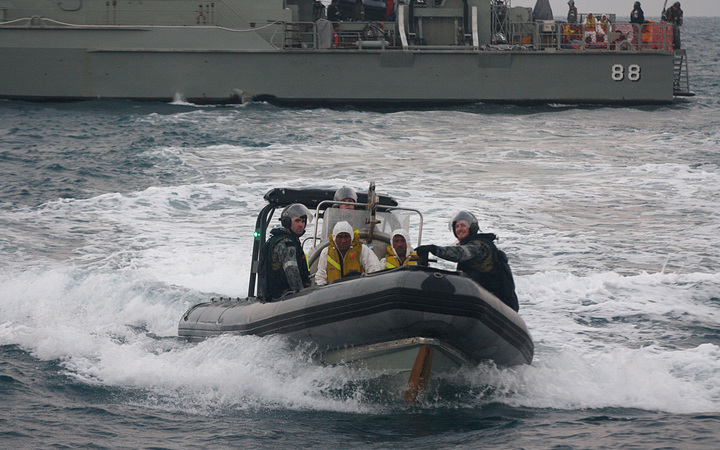 Australian navy personnel transfer Afghanistan asylum-seekers to a Indonesian rescue boat near Panaitan island, West Java on August 31, 2012 after the refugee’s boat sunk. Photo: AFP
Australian navy personnel transfer Afghanistan asylum-seekers to a Indonesian rescue boat near Panaitan island, West Java on August 31, 2012 after the refugee’s boat sunk. Photo: AFPThe government then created Operation Sovereign Borders – a military-led border security operation aimed at stopping maritime people-smuggling.
Bolstered by the reintroduction of boat turnback laws under Abbott’s government, Australia’s policy meant asylum seekers arriving on boats were either turned back to their country of departure or sent to an offshore processing facility.
Figures from Australia’s Department of Home Affairs state 873 people arriving across 38 vessels had been turned back to their country of departure from 2013 to 31 August 2021.
Since the second iteration of offshore detention began in 2012, refugees banished to Melanesia by Australia have suffered appalling rates of mental illness, in conditions described as torturous by the United Nations. At least 12 have died.
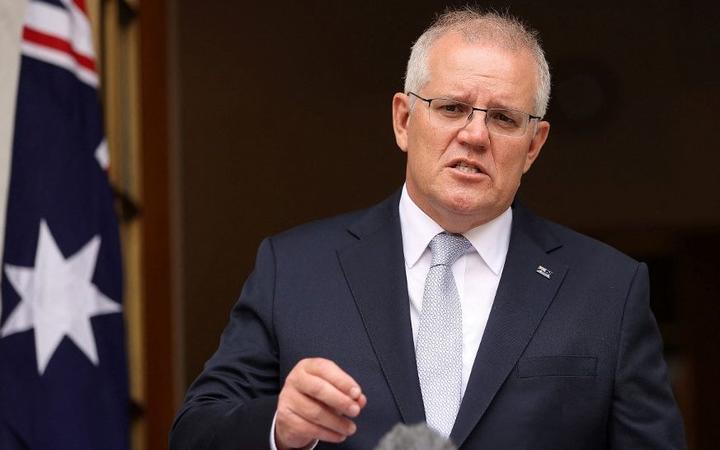 Australian Prime Minister Scott Morrison Photo: AFP
Australian Prime Minister Scott Morrison Photo: AFPWhy has the deal taken nearly a decade to be signed?
New Zealand’s offer of a refugee resettlement deal was left on the desk to be ignored for years by the successive Rudd, Abbott, Turnbull and Morrison governments – so why has it been agreed upon now?
In 2019, Prime Minister Scott Morrison and his Liberal Party were embarrassed as crossbench senators and the opposition united to pass the medevac bill.
The bill gave health authorities the power to have refugees taken from offshore detention facilities to mainland Australia to receive medical attention.
Morrison was vocal in his opposition to the result and quietly decided a deal needed to be struck if his party was to successfully reverse the decision.
Later that year, Tasmanian crossbench senator Jacqui Lambie controversially cast a decisive vote in favour of repealing the medevac bill.
After refusing to comment on her decision for years – calling it a matter of national security – Lambie recently claimed she had agreed to support the repeal in return for Morrison’s assurance that he would sign New Zealand’s offer of a refugee resettlement deal.
According to Immigration Minister Kris Faafoi, Australia rekindled New Zealand’s offer in 2020 and Cabinet signed off on the plan in February 2022.
With a general election scheduled to take place in the first half of this year, there have been suggestions Scott Morrison’s Liberal Party has backed down from its previous stance to appease voters increasingly disapproving of processing facilities’ controversial records.
ABC foreign affairs reporter Stephen Dziedzic told The Detail there was no definitive answer as to why Australia had changed its tune.
“It’s hard to find one single compelling factor, but I think all those things fed into a willingness in the government to try and reach an agreement with New Zealand.”
Dziedic said there was a recognition in government that politicians wanted to “find solutions” for refugees in offshore detention facilities.
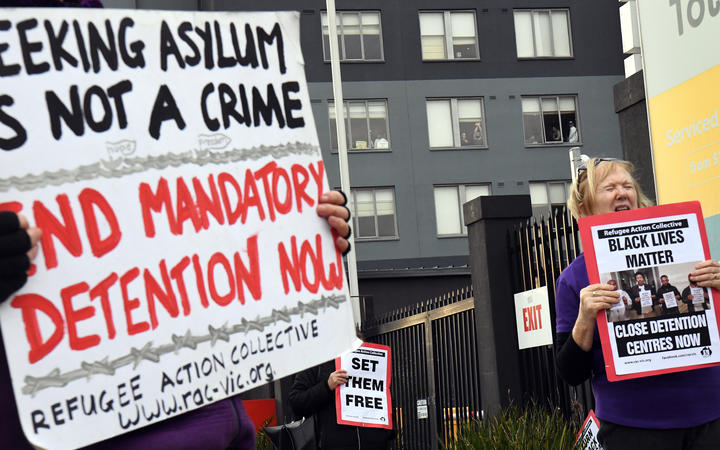 People hold up placards during a pro-refugee rights protest in Melbourne on June 13, 2020. Photo: AFP / William West
People hold up placards during a pro-refugee rights protest in Melbourne on June 13, 2020. Photo: AFP / William WestWho is covered in the deal?
The arrivals will be included as part of New Zealand’s existing annual refugee quota of 1500 people, and will initially include refugees who:
- Are in Nauru or temporarily in Australia under regional processing arrangements
- Who meet New Zealand’s Refugee Quota Programme requirements
- Who are referred to New Zealand by the UNHCR
- Who are not being resettled to other countries, such as the United States
They will come from detention centres in Nauru or Australia and be screened by the United Nations refugee programme and vetted by New Zealand authorities.
When the deal was announced, Immigration Minister Kris Faafoi issued a statement celebrating the deal as a success of humanitarian effort.
“New Zealand has a long and proud history of refugee resettlement and this arrangement is another example of how we are fulfilling our humanitarian international commitment,” he said.
However, the government’s recent decisions on immigration has lead to an inability to fulfill New Zealand’s own refugee intake commitments.
In 2020, New Zealand’s annual refugee quota was raised from 1000 to 1500, but in the two years since the government has failed to fulfill its quota, largely due to the Covid-19 pandemic.
Red Cross Australia figures state there were 26.4 million refugees worldwide at the end of 2020 – the highest ever number recorded.
Immigration New Zealand would not be drawn as to why the 150 refugees to be resettled were not deemed to be surplus to the annual refugee intake quota.
“We have the capacity to manage up to 150 refugees per year without negatively impacting other refugee commitments,” a spokesperson said.
Green Party immigration spokesperson Golriz Ghahraman said the government’s decision to put refugee family re-unification and resettlement on hold during the pandemic was responsible for the lull in intake over previous years.
The decision to include the refugee resettlement deal in the annual quota reduced New Zealand’s ability to resettle refugees fleeing other crisis points including war in Ukraine, the Taliban in Afghanistan and those facing political persecution in Myanmar and Hong Kong, she said.
“The crisis of mass displacement caused by war and persecution has not slowed, but accelerated, now with the added threat of Covid for those abandoned in over-crowed camps,” she said.
Ghahraman said it was important that New Zealand acted proactively to help refugees left stranded by Australia’s refugee policies.
“Prioritising our refugee in-take as well as helping end the violence of Australia’s off-shore prison camps in our Pacific neighbourhood, are part of New Zealand’s greater responsibility as a good regional and global citizen,” Ghahraman said.
 Green Party immigration spokesperson Golriz Ghahraman Photo: ©VNP / Phil Smith
Green Party immigration spokesperson Golriz Ghahraman Photo: ©VNP / Phil SmithWhat about refugees on Manus Island?
Refugees in Papua New Guinea (PNG) are not covered by the arrangement as they are no longer subject to Australia’s offshore processing legislation.
In 2016, the Papua New Guinea Supreme Court found the Australian-run offshore processing facility on Manus Island was illegal and ordered it to be closed by the end of 2021.
Upon the decision to close the Manus Island processing facility, remaining refugees were given the option to pursue pathways to permanent citizenship in PNG or be transferred to Nauru.
The Refugee Council of Australia says people subject to offshore processing still living in PNG are all in Port Moresby.
In a statement, an Immigration New Zealand spokesperson said refugees in detention facilities in Papua New Guinea were able to be referred to New Zealand by the UN Refugee Agency through the Refugee Quota Programme.
“If the UNHCR considers New Zealand to be the best option for resettlement for refugees currently based in Papua New Guinea, they are able to refer those refugees to New Zealand for resettlement through the existing Refugee Quota Programme,” the spokesperson said.
Immigration New Zealand said there had been no further discussions about extending the scope of the arrangement with Australia.
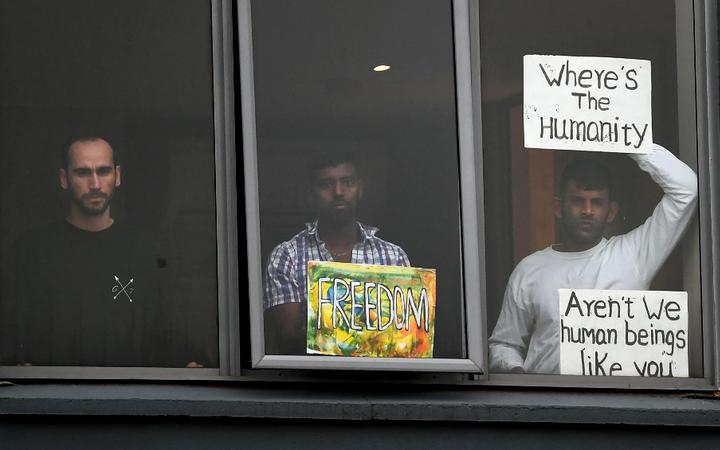 Three asylum seekers gesture to protesters holding a pro-refugee rights rally from their hotel room where they have been detained in Melbourne on 13 June, 2020. Photo: AFP
Three asylum seekers gesture to protesters holding a pro-refugee rights rally from their hotel room where they have been detained in Melbourne on 13 June, 2020. Photo: AFPWhat is the future of offshore detention facilities?
Since their introduction, Australia’s offshore detention facilities have long been a source of controversy and criticism.
Amnesty International found Australia’s use of offshore detention facilities to detain asylum seekers to torture under international human rights law and standards.
However, last year the Australian government announced a deal with Nauru to indefinitely continue the operation of its detention facility on the island, despite criticism of the estimated AU$3.5 million of taxpayer money being spent on each refugee detained there.
In a statement, Immigration New Zealand said Australia’s detention centre policy is a matter for the Australian government.
However, Golriz Ghahraman said the government had a responsibility to challenge our closest neighbour on its mistreatment of refugees.
“Successive Governments should have pushed harder for this deal to be accepted. But more than that, as a principled voice with a commitment to human right and international rule of law, New Zealand should have pushed Australia to close its prison camps,” she said.
Ghahraman called for the processing facilities to be shut and those responsible for injustices held accountable.
“They amount to an ongoing atrocity and must close, followed by restorative justice, restitution for victims, and individual legal accountability for those most responsible for perpetrating this violence through Australian or international justice processes,” she said.
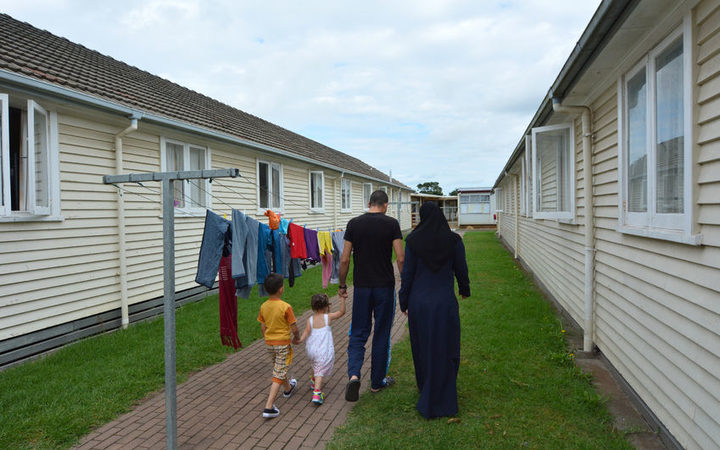 File image: A Syrian refugee family at the Mangere Refugee Resettlement Centre. Photo: 123RF
File image: A Syrian refugee family at the Mangere Refugee Resettlement Centre. Photo: 123RFImmigration Minister Kris Faafoi has stated refugees will receive the same support any refugee settling in New Zealand is provided with.
“We will take, as we do with all refugees, responsibility for them and give them the opportunity to create a new home here in New Zealand,” he told Checkpoint.
Immigration New Zealand states its refugee resettlement strategy aims to provide refugees with paid work, education and housing, while also encouraging active participation in New Zealand life.
Refugees will spend time at the Mangere Refugee Resettlement facility which provides medical checks and classes for those arriving in the country.
But with refugees arriving from inhumane conditions, Ghahraman said additional support could be required.
“The refugees arriving from the Australian prison camps have also experienced protracted abuse in addition to the initial trauma that caused them to flee their homeland, so they will likely need some extra support to resettle, in particular in mental healthcare,” she said.
“What we do know is that refugee groups do well once resettled and achieve highly in indicators like health, education and other areas, so the support has great wellbeing returns for generations to come,” she said.
Ghahraman said non-profit organisations would also play an important role in providing wrap-around support for refugees as they settle into their new lives.
